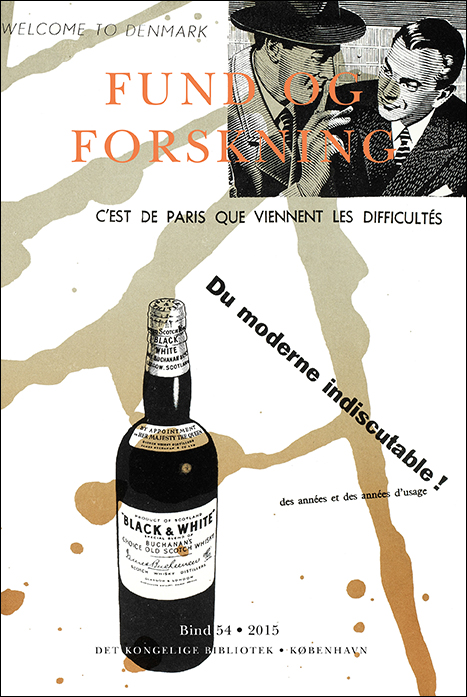Montager svøbt i matricepap. En materialearkæologisk undersøgelse af Asger Jorn og Guy Debords Fin de Copenhague
DOI:
https://doi.org/10.7146/fof.v54i0.118905Resumé
Thomas Hvid Kromann: Montages wrapped in flong. A material-archeological examination of Asger Jorn and Guy Debord’s Fin de Copenhague
The article presents and analyses Fin de Copenhague, which was published in 1957 by the Danish painter Asger Jorn and the French theorist and activist Guy Debord. According to legend, this famous avant-garde masterpiece was created in a 24-hour fit of vandalistic creativity and bound in a waste product from the production of newspapers, “flong,” making every copy in this edition of 200 unique. Until recently, Fin de Copenhague has been analyzed within the theoretical framework of the Situationist International (1957–1972), focusing rather on the concept than the materiality of the book. In alignment with a heightened theoretical awareness of the importance of Jorn’s printed matter, the article closely examines Fin de Copenhague, drawing on a combination of art historical and book historical disciplines.
The first part of the article is focused on the production, the distribution and the reception of the work. Hereby, the article presents the first thorough analysis of the intertextuality of the work as well as the international network the book circulated within. In the second part of the article, one finds an in-depth analysis of the flong. Until now, no research has focused on the variations of Fin de Copenhague. The author has collected photographic documentation of numerous covers from European and American libraries, copies owned by collectors, and copies sold at auction. In this way, the multiple covers can be studied, including the various aesthetic effects of each individual book cover. Furthermore, a material-archeology of the flong makes it possible to date the single pieces of flong, proving that Fin de Copenhague couldn’t possibly be created within these 24-hours. It is necessary to differentiate between finalizing the idea for the book, the printed work and the published work. In addition to this, the notion of the “social authorship” is underlined, stressing the importance of the printers Verner Permild and Bjørn Rosengreen.


